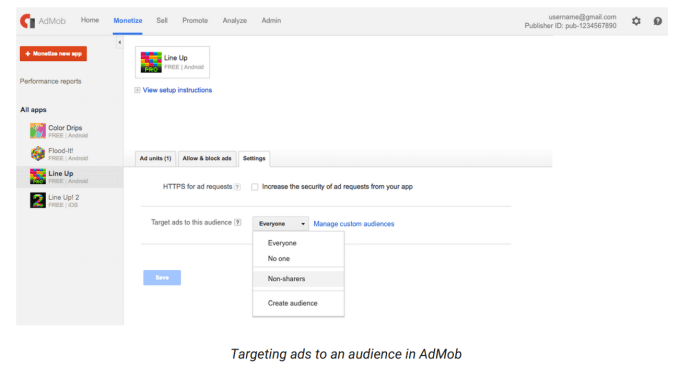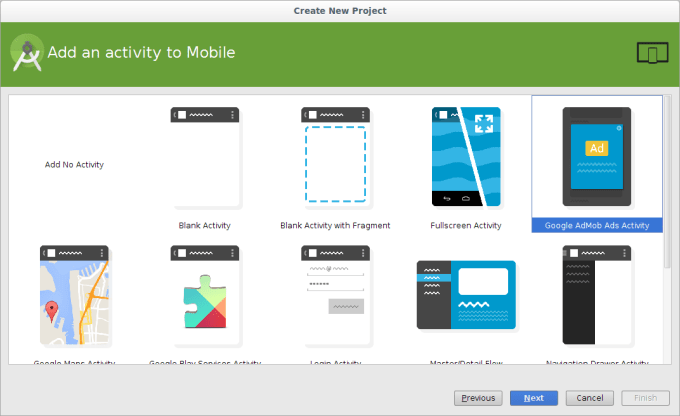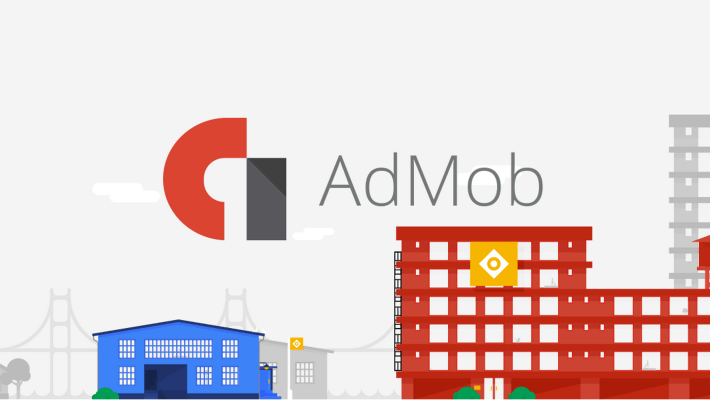In addition to new products and media partnerships aimed to help app developers grow and manage their businesses, Google today also announced a new set of AdMob tools to help developers better target ads, serve native ads, and scale their apps more quickly with support from app sales teams.
The company also noted it has expanded AdMob mediation – a tool that lets developers maximize their fill rates by sending ad requests to multiple networks – to now 40 mediation partners, including major networks like Facebook, Twitter, AdRally, LeadBolt, Nend, AppsFire, and, more recently, the large Chinese mobile ad network Tencent GDT.
Fifteen of these networks were added over the past year alone, notes Google.
AdMob’s New Features
In terms of new AdMob features, Google has improved on its Audience Builder Tool, which is still in beta. The tool allows app developers to segment users based on how they interact with an app. With the update, developers will now be able to show ads just to particular segments, while hiding ads from others. For instance, a developer could show an ad to casual users while hiding it from more engaged users.
In addition to helping developers target their audience with ads, Google also announced the beta of a new service to help mobile app sales teams it’s calling AdMob Reservations. With this, sales teams will be able to take ad campaign bookings from advertisers directly, upload ad creatives, and manage their campaigns for free using AdMob’s platform. The idea with AdMob Reservations is to help fast-growing apps more quickly scale their global reach while continuing to monetize their applications.
Google notes that Etermax, creators of the popular game Trivia Crack, is one of the early testers for this service.

Another AdMob update planned for the near future is an improved way to help developers serve native ads. Explains Google, the update will allow developers to take advantage of this popular ad format without requiring them to do custom design work to match the ad to the style of their app. Instead, developers will define the style of their ad using CSS, and AdMob will serve the ads based on these specs. Developers will also be able to update the ad as often as they want by editing the CSS.
Finally, AdMob is also now integrated into Android Studio, Google’s official IDE for Android development. AdMob was already offered as a plugin to third-party game engines like Unity and Cocos2d-x, so of course it makes sense to build it into Google’s own product, too.

Google says that AdMob’s platform today supports over 650,000 apps. The company argues it’s now playing a more important role in the business of monetizing mobile applications, as fewer users are willing to pay for apps.
Google notes that only a third of users are paying for apps, while developers using freemium models and in-app ads have grown their revenue over 70 percent from 2013 to 2014. Of course, users’ willingness to pay for apps varies from platform to platform, as other reports have shown. iOS users are often more willing to pay for app downloads, as are those who browse the Amazon Appstore versus Google Play.

